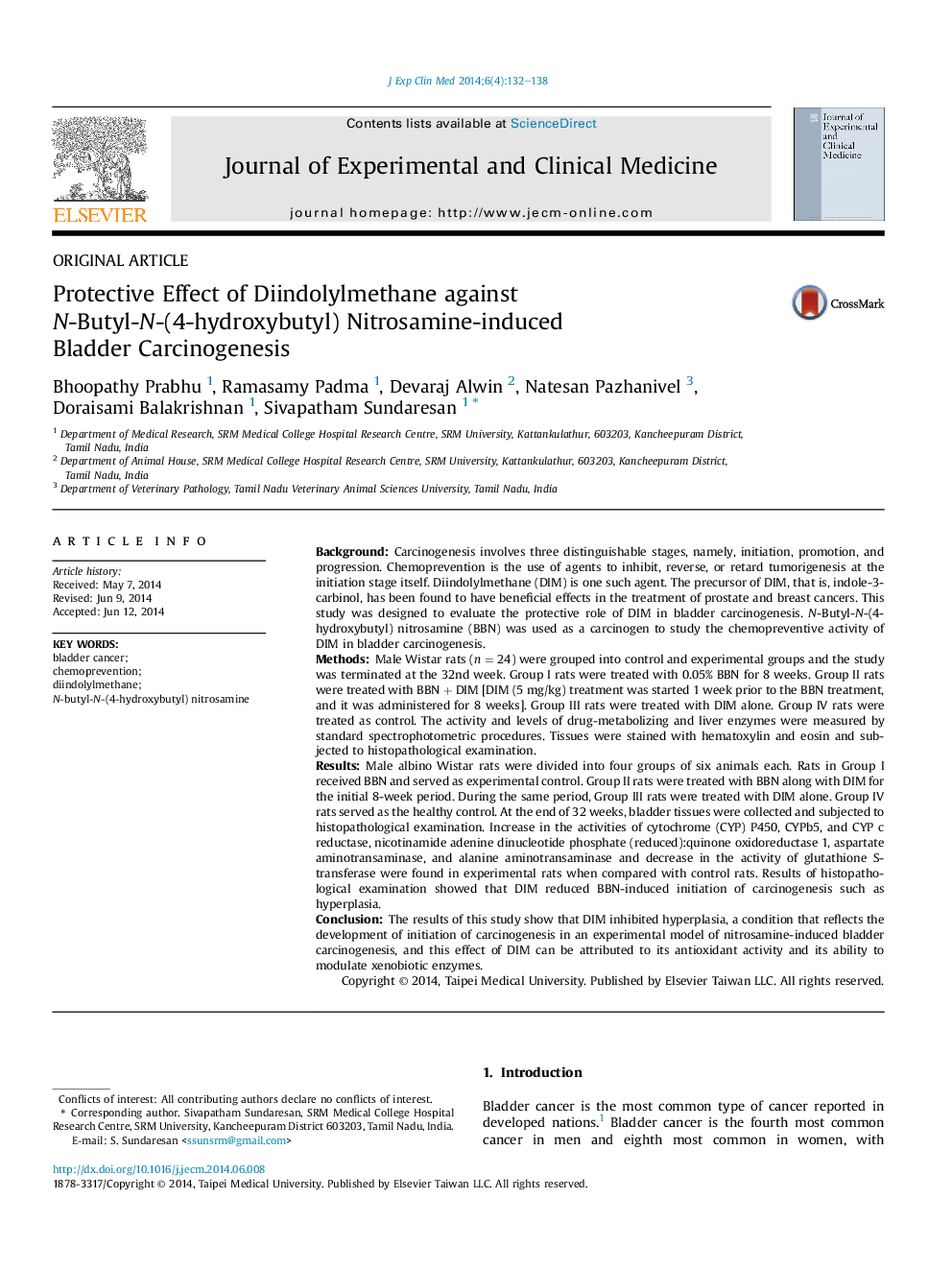| کد مقاله | کد نشریه | سال انتشار | مقاله انگلیسی | نسخه تمام متن |
|---|---|---|---|---|
| 3477769 | 1233362 | 2014 | 7 صفحه PDF | دانلود رایگان |

BackgroundCarcinogenesis involves three distinguishable stages, namely, initiation, promotion, and progression. Chemoprevention is the use of agents to inhibit, reverse, or retard tumorigenesis at the initiation stage itself. Diindolylmethane (DIM) is one such agent. The precursor of DIM, that is, indole-3-carbinol, has been found to have beneficial effects in the treatment of prostate and breast cancers. This study was designed to evaluate the protective role of DIM in bladder carcinogenesis. N-Butyl-N-(4-hydroxybutyl) nitrosamine (BBN) was used as a carcinogen to study the chemopreventive activity of DIM in bladder carcinogenesis.MethodsMale Wistar rats (n = 24) were grouped into control and experimental groups and the study was terminated at the 32nd week. Group I rats were treated with 0.05% BBN for 8 weeks. Group II rats were treated with BBN + DIM [DIM (5 mg/kg) treatment was started 1 week prior to the BBN treatment, and it was administered for 8 weeks]. Group III rats were treated with DIM alone. Group IV rats were treated as control. The activity and levels of drug-metabolizing and liver enzymes were measured by standard spectrophotometric procedures. Tissues were stained with hematoxylin and eosin and subjected to histopathological examination.ResultsMale albino Wistar rats were divided into four groups of six animals each. Rats in Group I received BBN and served as experimental control. Group II rats were treated with BBN along with DIM for the initial 8-week period. During the same period, Group III rats were treated with DIM alone. Group IV rats served as the healthy control. At the end of 32 weeks, bladder tissues were collected and subjected to histopathological examination. Increase in the activities of cytochrome (CYP) P450, CYPb5, and CYP c reductase, nicotinamide adenine dinucleotide phosphate (reduced):quinone oxidoreductase 1, aspartate aminotransaminase, and alanine aminotransaminase and decrease in the activity of glutathione S-transferase were found in experimental rats when compared with control rats. Results of histopathological examination showed that DIM reduced BBN-induced initiation of carcinogenesis such as hyperplasia.ConclusionThe results of this study show that DIM inhibited hyperplasia, a condition that reflects the development of initiation of carcinogenesis in an experimental model of nitrosamine-induced bladder carcinogenesis, and this effect of DIM can be attributed to its antioxidant activity and its ability to modulate xenobiotic enzymes.
Journal: Journal of Experimental & Clinical Medicine - Volume 6, Issue 4, August 2014, Pages 132–138